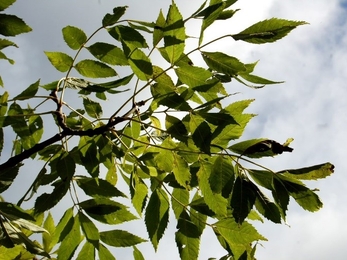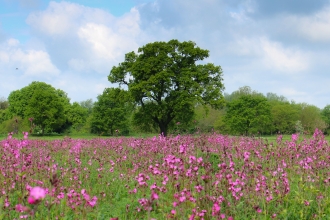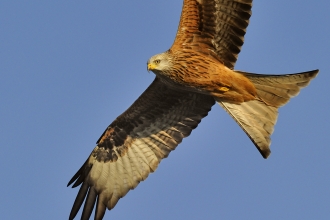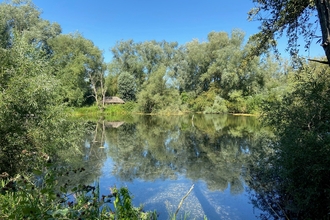Ash Dieback Fund
Spring is here and our woodlands are bursting into life. It is a wonderful time of year to be in a British woodland, with carpets of bluebells on the ground and birdsong in the air. We care for more than 1000 hectares of woodland, much of it ancient woodland, a rare and precious habitat. Yet our woodlands are battling a silent killer, one which will alter the appearance of our woods dramatically in the coming years.
You may have heard of Ash Dieback. It has now been in this country for 10 years and is a devastating disease for ash trees. Not since Dutch Elm disease have we faced such an overwhelming attack on our native trees. As the disease progresses, ash trees become more decayed and dangerous, prone to falling or losing branches unpredictably. Dead or dying trees pose a significant risk to the public where they are close to houses, play areas, roads, car parks and paths. These trees must be felled before it becomes too risky to do so safely. In parts of woodland where they present less of a risk to people, mitigation can include thinning areas of ash trees before they die, to allow more light to reach the forest floor and promote natural regeneration.
Ash dieback could kill over 80% of our ash tree population. And it’s not just trees at risk, birds such as woodpeckers, owls, nuthatches and other birds nest in ash trees. Young caterpillars of many moth species rely on ash leaves for food, while their airy canopies create perfect conditions for wild flowers such as wild garlic and dog’s mercury to thrive on the forest floor.
What does Ash Dieback look like?
What are we doing?
Last year, our Monitoring and Research Team began a programme of woodland monitoring to keep an eye on the spread of ash dieback. Repeating these surveys every year will help track the disease and guide future management. Although our Reserves Teams know our sites well, the surveys have already provided vital information to help us understand the extent of the problem even better.
The three sites we’ve looked at so far are the central part of Brampton Wood and Waresley and Gransden Woods in Cambridgeshire, and Short Wood in Northamptonshire. Within the sampled areas, ash accounts for a significant proportion of the tree canopy from 13% at Short Wood, to 42% at Brampton Wood, and 65% at Waresley and Gransden Woods. Of the ash trees we recorded, there were obvious signs of ash dieback in 28% at Brampton, 47% at Short Wood, and 84% at Waresley and Gransden, so the impact the disease will have on these woodlands is clear.
Work to fell and thin trees has already taken place at a number of our reserves.
A ray of light
Tackling ash dieback doesn’t have to be devastating as it creates new opportunities for wildlife to flourish in our woods. While new trees and plants are naturally regenerating, the opened up areas will provide wildlife-rich woodland glades and rides. Butterflies, birds, fungi and woodland flowers will all thrive here. We will also leave plenty of dead wood to form a vital part of the woodland ecosystem. In time our woods will find a new and healthy balance.
Additionally, around 5% of ash trees may be resistant, so, if left to reproduce, could pave the way to a new generation of ash dieback resistant trees.
Any donation will make a difference to our ability to tackle the effects of ash dieback and ensure our precious woodlands remain healthy. Thank you.
Ash Dieback Fund
FAQs
What will my donation be spent on?
Your gift will help us continue to monitor our woodlands for signs of ash dieback, fell any diseased trees which pose an immediate risk to people, or thin areas of ash trees to allow natural regeneration of native trees and create new areas of habitat for wildlife. Your gift could also help us plant native broadleaf trees where necessary.
How can I find out more about ash dieback?
You can find out more about the disease Ash Dieback and its history on our Ash Dieback webpage Ash dieback | Wildlife Trust for Beds, Cambs & Northants (wildlifebcn.org)
What happens if you don’t raise enough money?
If we raise insufficient funds, we will ask our Trustees to consider covering the cost of our Ash Dieback work from our financial reserves.










